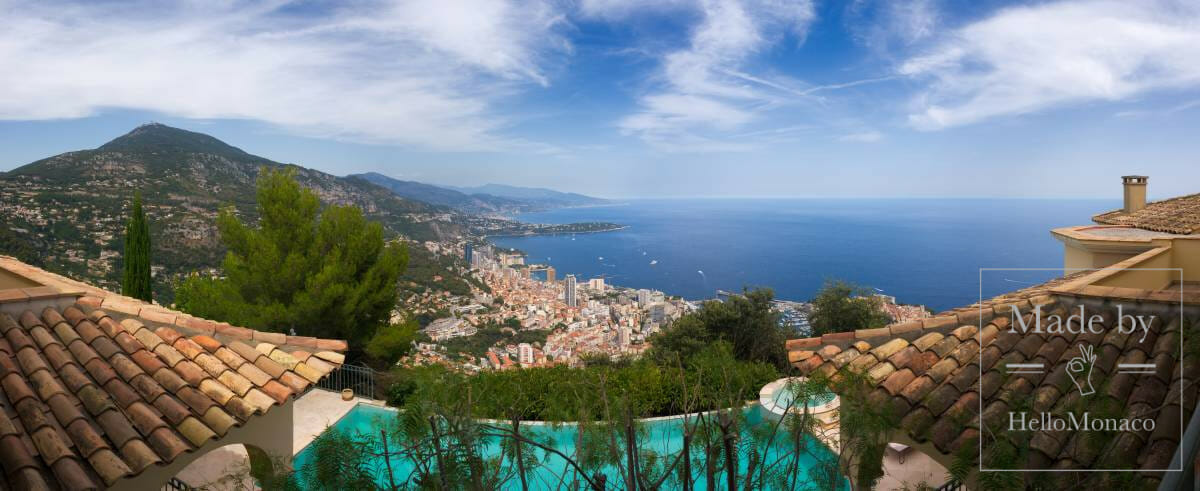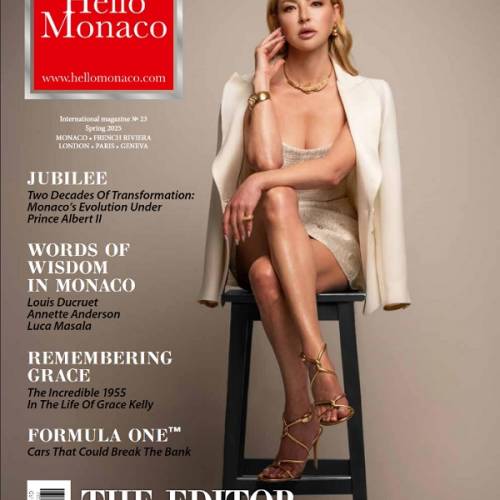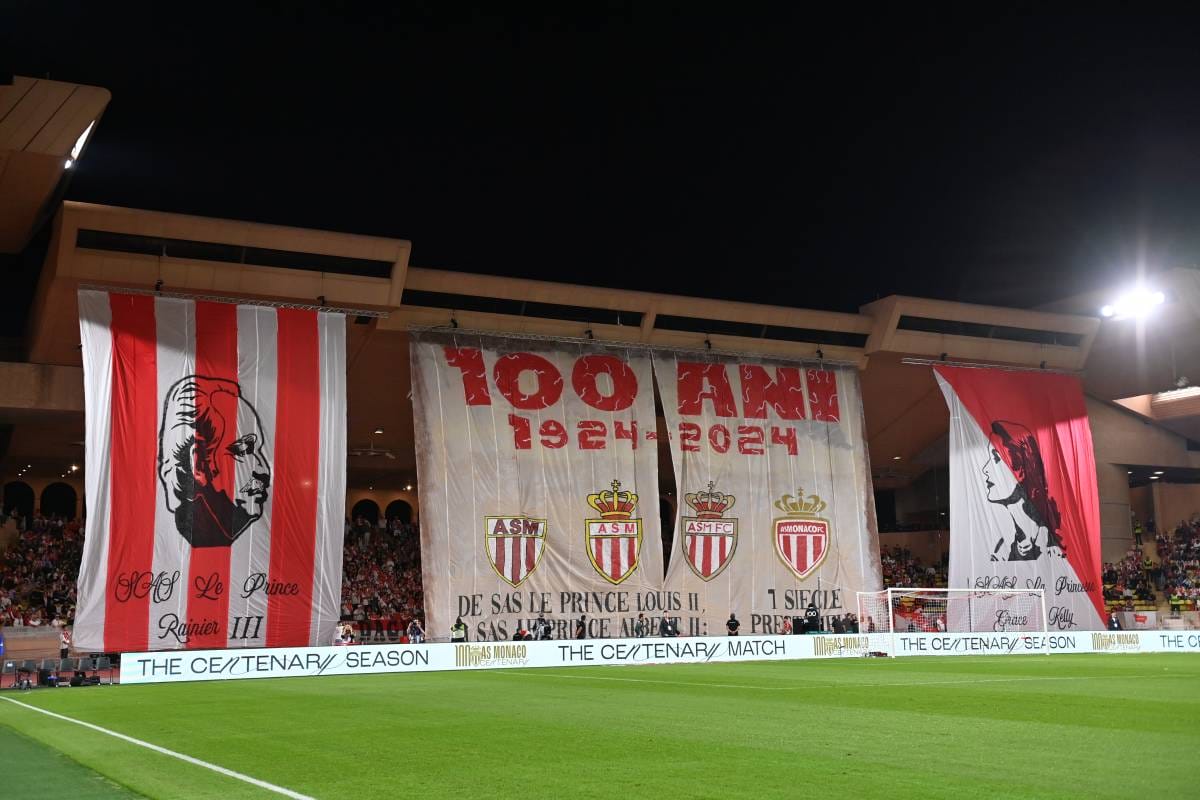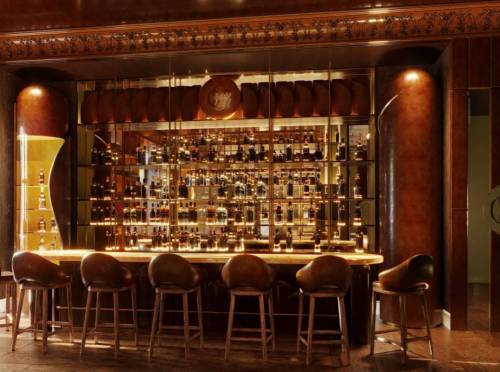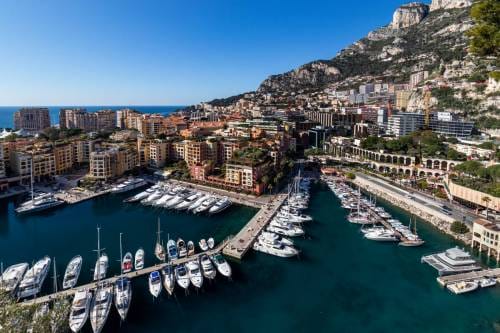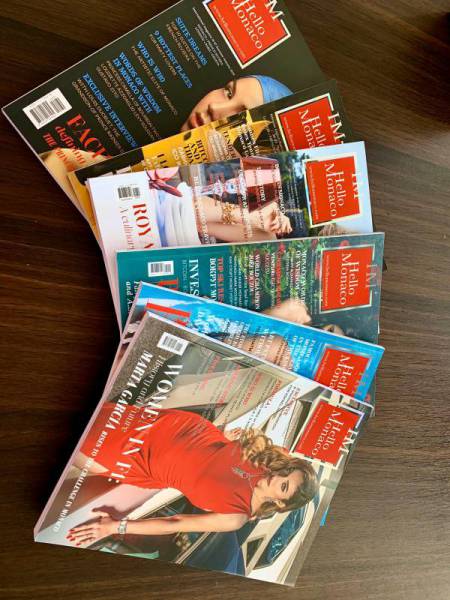As AS Monaco celebrates its centenary in 2024, the club stands as one of the most storied teams in French football. From its establishment in 1924 to its current position in Ligue 1, Monaco’s journey has been defined by passion, resilience, and a commitment to excellence. With 8 Ligue 1 titles, 10 national cups, and two European finals under its belt, the club has risen to greatness while overcoming significant challenges. The club’s unique identity is embodied in the famed red-and-white diagonal jersey designed by Princess Grace and its home ground, Stade Louis-II. Today, AS Monaco not only honours its rich past but eagerly prepares for a promising future under a fresh leadership team and renewed ambitions.
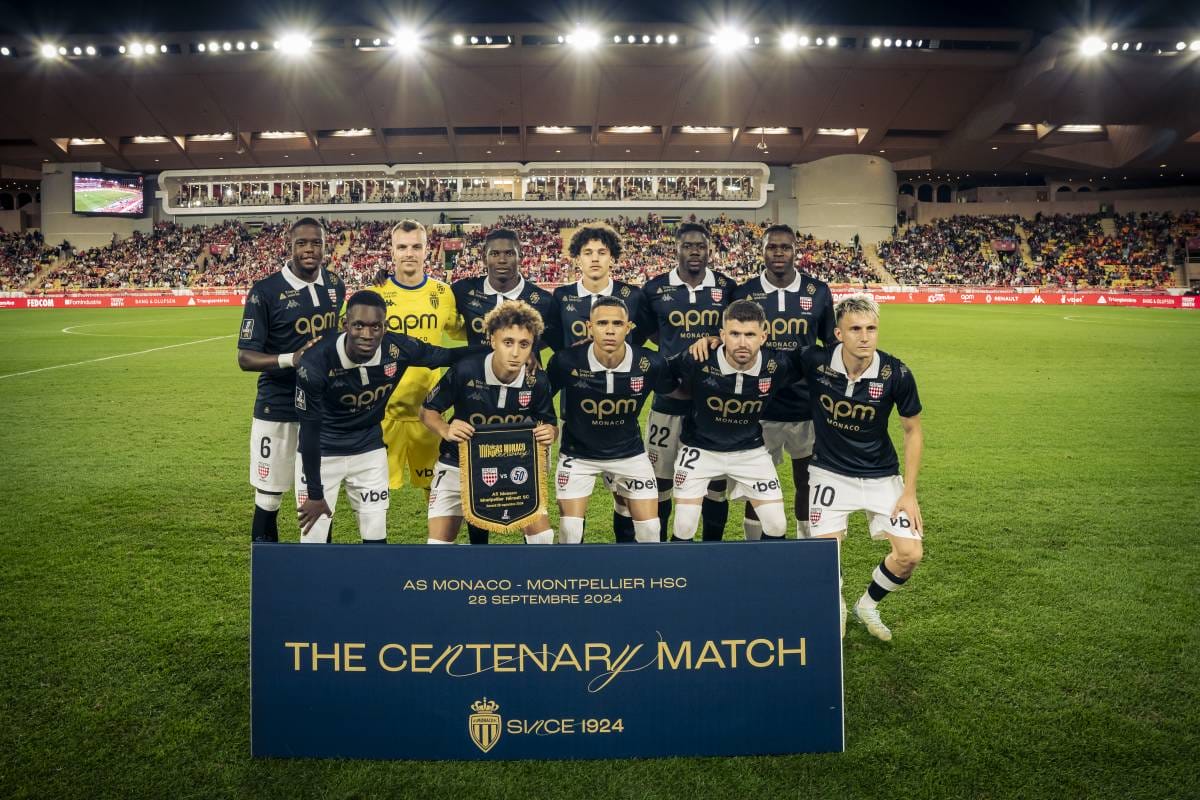
A Historic Centenary Celebration
September marked a milestone in AS Monaco’s history as fans, former players, and esteemed guests gathered to celebrate the club’s centennial. The event was not just a celebration but a declaration of the club’s sustained ambition. Prince Albert and club president Dmitry Rybolovlev led the festivities, with a fictitious kickoff before Monaco’s thrilling victory over Montpellier. The day brought together about 14,000 fans at Louis-II Stadium, who witnessed an honorary lap by 50 former club legends, including icons like Arsène Wenger, Ludovic Giuly, and Manu Petit.
The 88-year-old Lucien Cossou, a hero of Monaco’s 1960s success, was among the former players, evoking memories of the club’s first French championship in 1961 and Coupe de France titles. Former presidents, coaches, and players earlier gathered at Monaco’s Performance Centre at La Turbie for a reunion that bridged decades of Red-and-White glory.

Recent Accomplishments including Beating Barca
In the past two years, AS Monaco has achieved several significant milestones, highlighted by their return to the UEFA Champions League in 2024. This qualification came after a six-year absence from the tournament, securing second place in Ligue 1 at the end of the 2023–24 season. Monaco kicked off their Champions League campaign with a notable 2:1 victory over Barcelona, marking a triumphant return to European competition. This match showcased the strength of their squad, with standout performances from young talents like Maghnes Akliouche and George Ilenikhena, who scored the winning goal.
Domestically, Monaco has consistently finished among the top three in Ligue 1, driven by key players like Takumi Minamino, Breel Embolo, and Denis Zakaria under the guidance of coach Adi Hütter. This consistency has helped them re-establish a strong reputation in French football, positioning the team as one of the leading contenders in the league. At the time of writing AS Monaco is contesting the leadership of the League with Paris Saint-Germain.
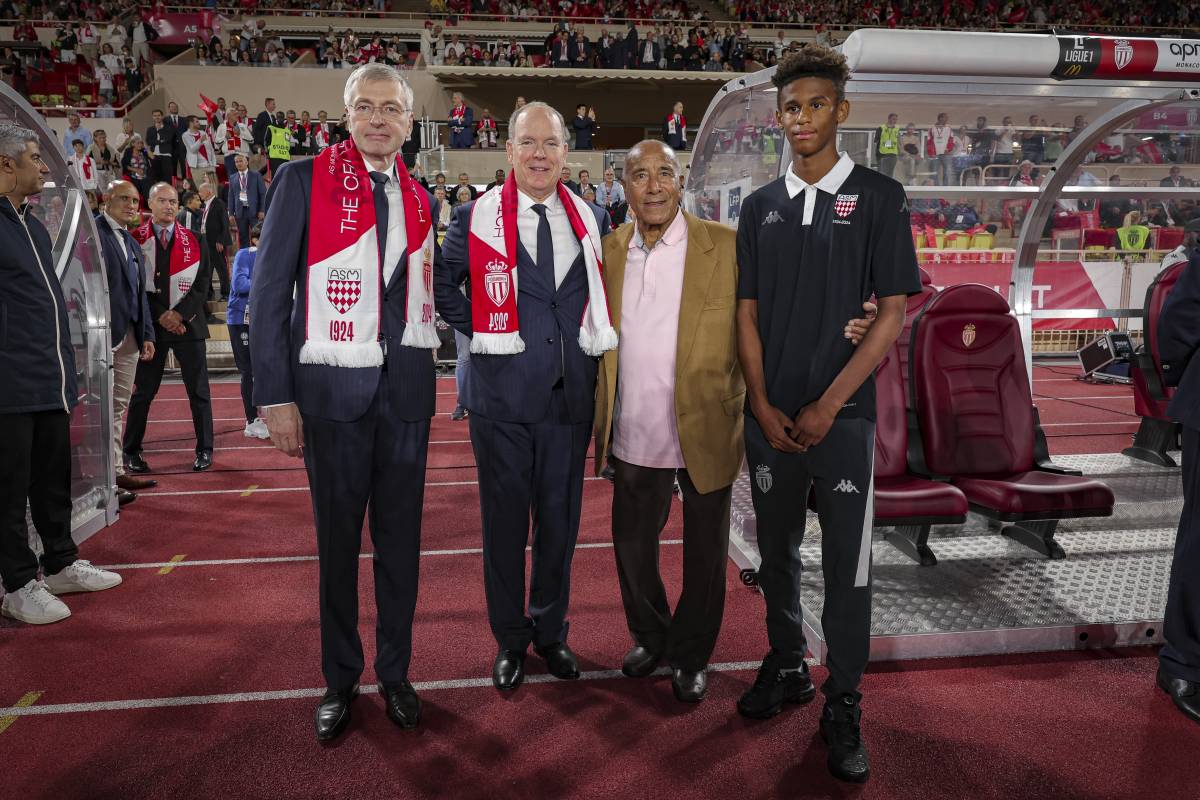
A New Era of Leadership
With its centenary comes a fresh leadership team signaling a new era for AS Monaco. Thiago Scuro, appointed as CEO, and Coach Adi Hütter have embarked on a mission to elevate the club in both Ligue 1 and the Champions League. Known for his strategic acumen, Scuro arrived in Monaco with extensive management experience from leading South American teams, including Red Bull Bragantino. Since his arrival, Scuro has focused on cultivating team cohesion and ensuring Monaco’s operations reflect both rigour and empathy. “It is a team sport, and our success can only be collective,” Scuro emphasized, underscoring his commitment to a united approach that leaves no room for individualism.
Adi Hütter, Monaco’s new coach, brings a wealth of experience and a winning mindset to the club. Hütter’s arrival, along with Scuro’s appointment, reflects AS Monaco’s strategic shift toward steady, high-level performance. Known for his success with various European teams, Hütter aligns with Scuro’s vision of growth from within, particularly in terms of developing young talent. Together, they form a leadership team that aspires not only to reclaim the Ligue 1 title but also to compete with Europe’s top clubs, eyeing success in the Champions League.
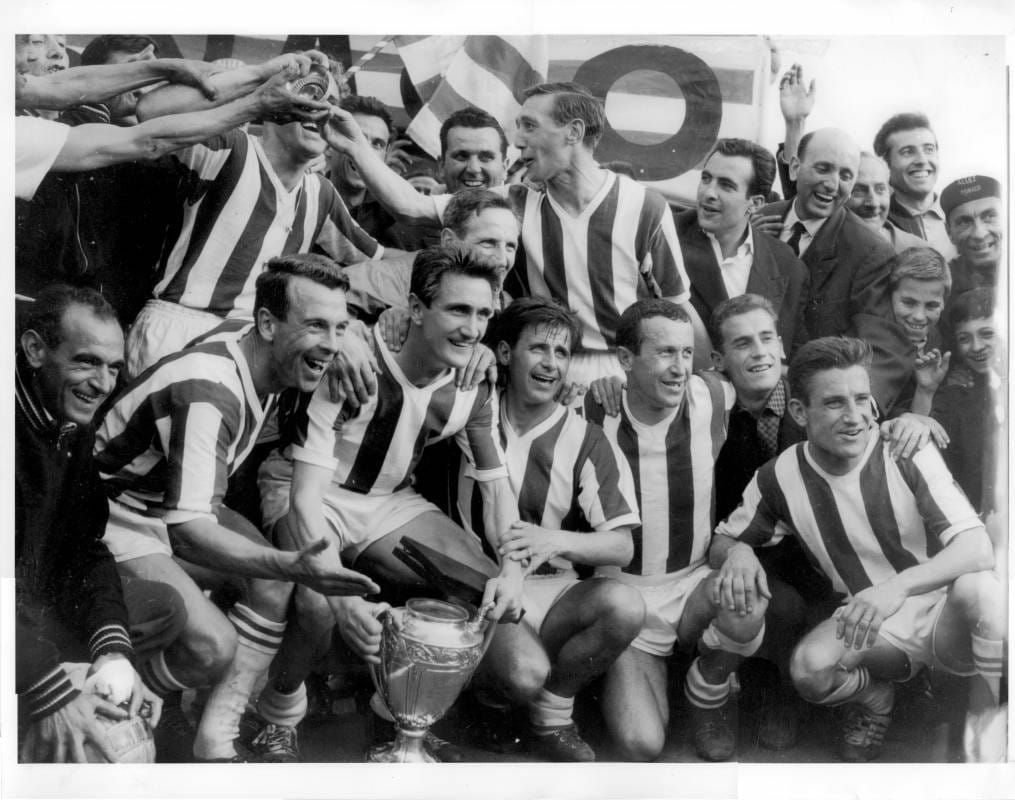
The Club’s Roots and Rise to Prominence
AS Monaco’s journey began in 1919 through the amalgamation of local sporting clubs, formally founding as AS Monaco in 1924. After several attempts to establish itself in French professional football, the club made significant strides post-World War II, joining the Second Division in 1948 and earning promotion to the First Division by 1953. Monaco’s royal patronage, particularly from Prince Rainier, played a vital role in these early successes.
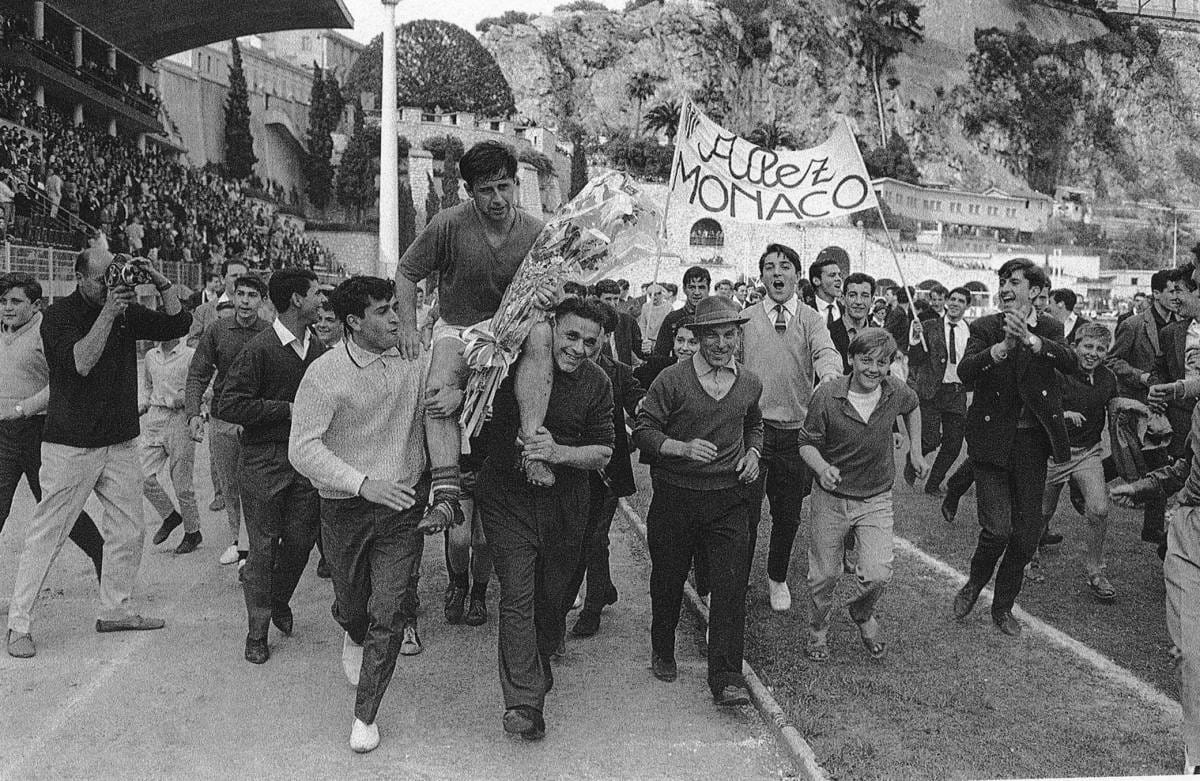
The Start of the Silverware
With charismatic coach Lucien Leduc and legendary captain Michel Hidalgo at their helm, AS Monaco found their footing in the First Division and eventually won their first silverware in 1960, a French Cup win over Saint-Etienne.
The next year, with a new jersey designed by Princess Grace swapping the vertical red-and-white stripes for diagonal ones, a design still dominant today, ASM won the French League for the first time. The League win was repeated two seasons later as Henri Biancheri and his teammates earned the first League-Cup double in ASM’s history.
But you would have to endure periods full of agony as well as ecstasy and have nerves of steel. Read on, their history is rich indeed — over 100 years of it. And look at the roster of talent over the years, among them were Delio Onnis, Bruno Bellone, Jean-Luc Ettori, Enzo Scifo, Jürgen Klinsmann, Thierry Henry, Youri Djorkaeff, Fabien Barthez, Patrice Evra, Yaya Touré, just to name a few.
The year 1973 witnessed ASM bringing in historically its greatest ever striker, Argentinian player Delio Onnis who became their best-ever scorer over the next six years (223 goals).
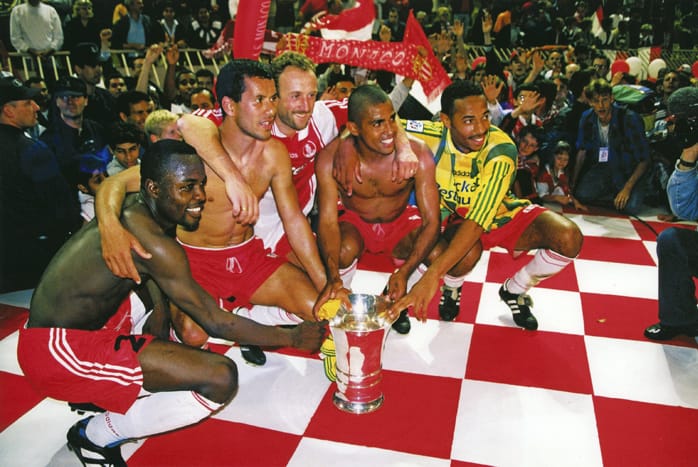
Years of Success
Lucien Leduc guided Monaco to three league titles and two domestic cups. In 1960, Monaco coach Lucien Leduc had already led the club to its first professional trophy, the Coupe de France, beating Saint-Étienne 4:2 in extra time. This initial success was bettered in the following year 1961 with the club winning the French Championship for the first time in its history, qualifying for the European Cup. Leduc subsequently led the club to its first League and Cup Double in 1963.
Upon Leduc’s departure in 1963, Monaco endured a barren run. Chairman Jean-Louis Campora (son of former president Charles Campora) in his second season, brought back Leduc, who immediately steered the club to promotion to the first division and won the championship the following year in 1978. And in 1979 ASM won their first La Coupe des Alpes trophy. Leduc subsequently left the club again in 1979.
The early 1980s saw a steady flow of successes in national competitions. Monaco gained a title virtually every other year, the Coupe de France in 1980 and 1985, the French Championship in 1982, and it was Coupe de France finalist and French Championship runner-up in 1984. Can you guess what was one of the biggest match wins in the Club’s history? In the 1985–1986 season, Monaco gave Bordeaux a thorough hammering 9:0!
In 1987 AS Monaco signed Arsène Wenger. Wenger’s reign marked one of the club’s most successful periods. Youth team policies produced future World Cup winners Emmanuel Petit, Lilian Thuram and Thierry Henry. Under Wenger, they won the league in his first season in charge (1988) and the Coupe de France in 1991, with the club consistently competing in the latter stages of the European Cup and regularly challenging for the league title.
After Wenger’s departure, the club went on to record two further league championships under Jean Tigana in 1997 and under Claude Puel in 2000.
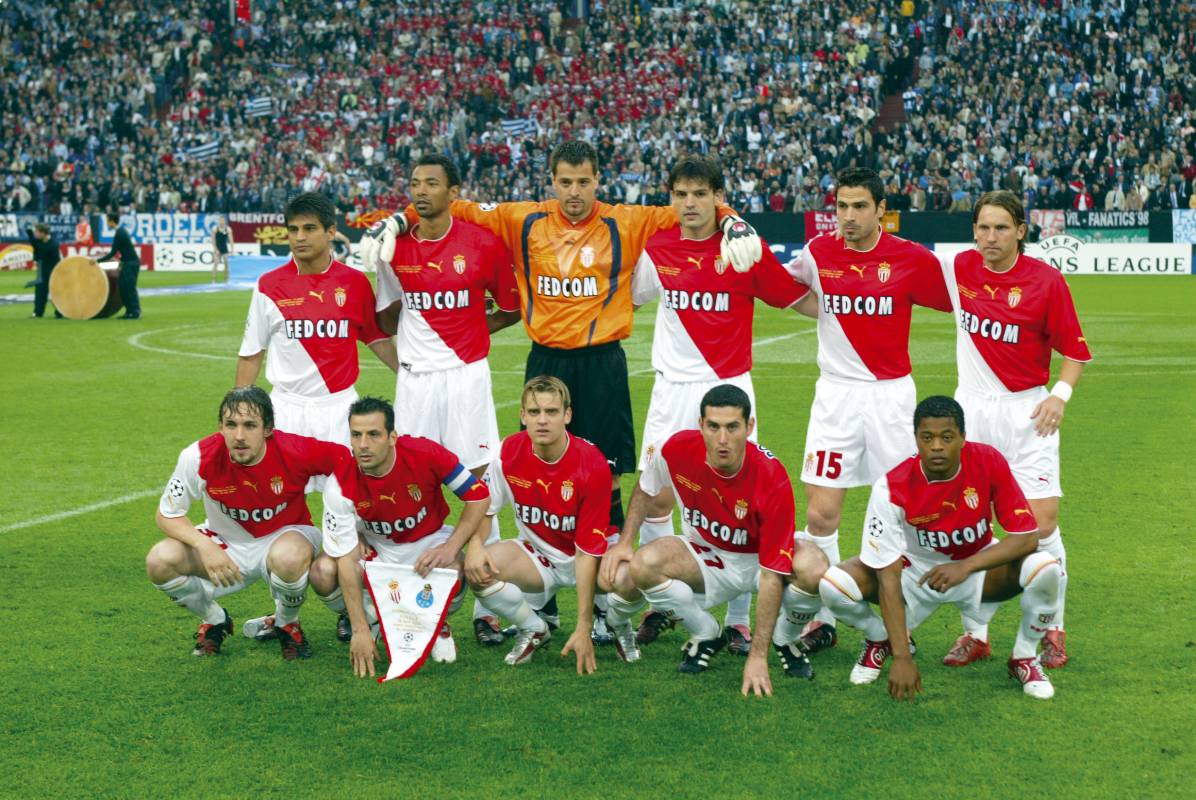
The Modern Wave of Agony and Ecstasy
The team, coached by former French national team captain Didier Deschamps and featuring soccer giants such as Fernando Morientes, Ludovic Giuly, Jérôme Rothen and Dado Pršo, finished third in Ligue 1 and enjoyed a remarkable run to the final of the UEFA Champions League, beating Real Madrid and Chelsea along the way. However, in spite of the on-field success, the 2003–2004 season was one of the club’s most difficult financial years in its history. With debt amounting to 53 million euros the club was struggling to keep its best players and the Palace was looking for new investors. Within 12 months, Deschamps had left as coach.
Monaco finished the 2010–2011 season in 18th position. There were no funds to strengthen the squad, a very young team was going through a long series of defeats with changes of coaches. By December 2011, Monaco had sunk to the bottom of Ligue 2. But then its modern Renaissance era began.
In December 2011, 66.67 % of the club was sold to the Russian billionaire and Monaco resident Dmitry Rybolovlev. The new dynamic launched another wave of resurgence — back again to Ligue 1 with coach Claudio Ranieri, whose attacking oriented football saw the club score 64 goals in the 2012–2013 season. With the club only losing four times, Monaco completed the season as champions, earning promotion back to Ligue 1.
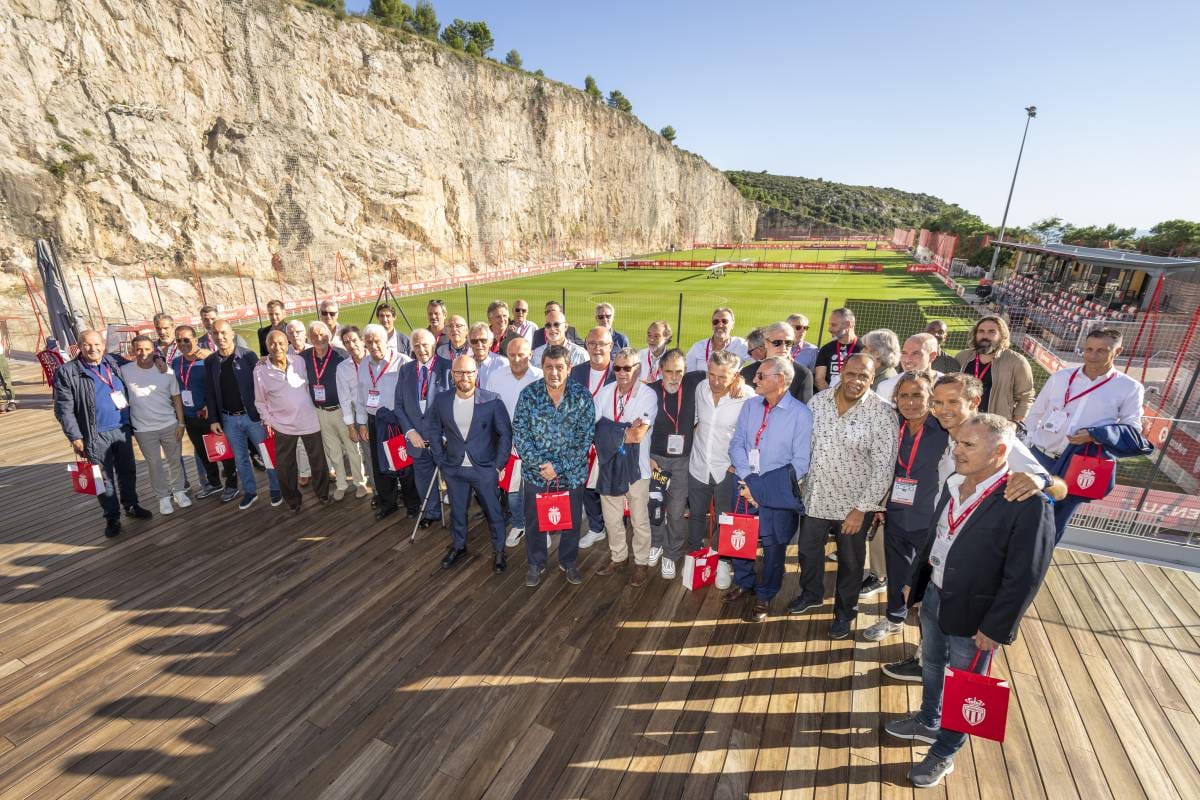
Monaco became one of the most prodigious spenders in European football in the summer of 2013. Thanks to Rybolovlev investments they spent more than €150 million on players including Radamel Falcao, James Rodríguez and João Moutinho.
Ranieri was succeeded by Leonardo Jardim who joined Monaco in 2014, and with Jardim the club managed to succeed at grabbing its eighth Ligue 1 championship in the 2016–2017 season. The title was secured on 17 May 2017 by defeating Saint-Étienne 2:0. Radamel Falcao and Kylian Mbappé scored 30 and 26 goals respectively to ensure Monaco won their first Ligue 1 title in 17 years.
The 2016–2017 season was also marked by a Champions League semi-final against Juventus. Before that, Monaco had dominated Tottenham, Manchester City and Borussia Dortmund, thus confirming their reputation for defeating the continent’s big teams.
All this while managing to attract to the red and white shirt, thanks to the unfailing support of president Dmitry Rybolovlev, such stars as Falcao, Berbatov, Moutinho, Carvalho, Abidal, Ben Yedder and Fabregas.
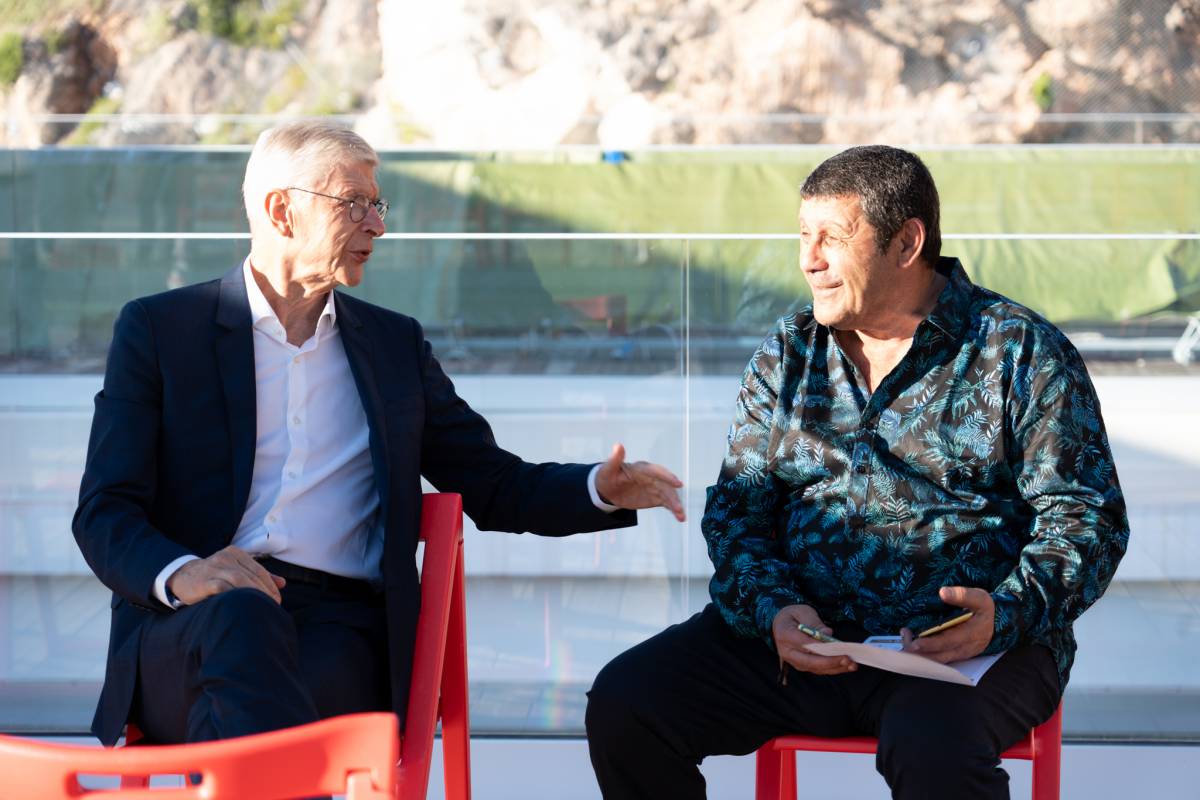
AS Monaco has long known how to combine experience and talented youth. A pioneer in training since the 1970s, the club has made the development of young players a trademark and is one of the best suppliers of international players.
History records that 5 French world champions were trained at Monaco (Henry, Trezeguet, Petit, Thuram and Mbappé), and that 4 players trained at the club scored the last goal sealing the 4 great successes of the French national team in international competition (Bellone at Euro 1984, Petit at the 1998 World Cup, Trezeguet at Euro 2000 and Mbappé at the 2018 World Cup).
In recent years, the Club, which can now take advantage of a high-quality living centre for the Academy with the La Diagonale building, has also become a reference in post-training, bringing out young talents from other horizons in the image of Martial, Bernardo Silva, Carrasco, Ocampos, Bakayoko, Fabinho and Lemar.
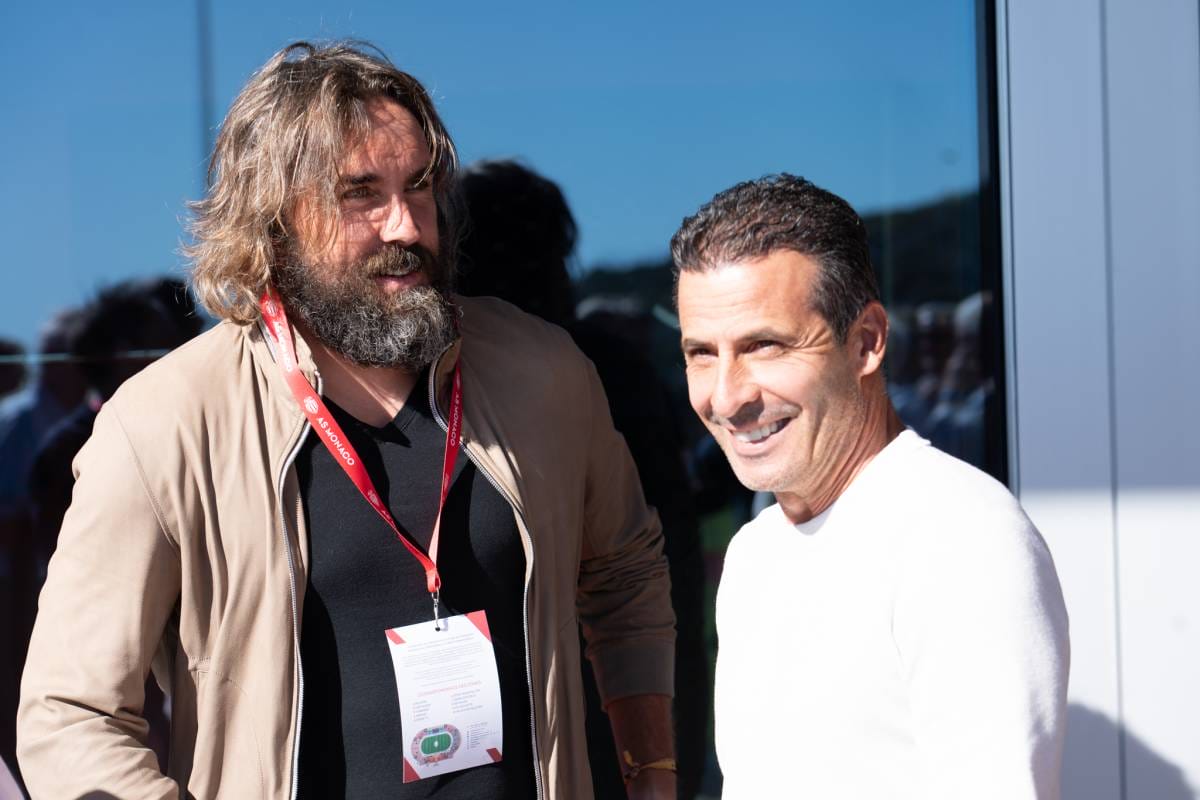
AS Monaco remain ambitious. The delivery of the La Diagonale building in autumn 2020 and the inauguration of the Performance Centre in 2022, are new tools in the quest for excellence.
This €55 million investment in the construction of the Performance Centre, which was assured by President Dmitry Rybolovlev, is a testament to the lasting sporting ambition that drives him, but also to his desire to provide AS Monaco with solid foundations for the future.

Europe Beckons 2021 Onward
The season 2020–2021 was one of renewal for AS Monaco. After President Rybolovlev appointed Oleg Petrov as vice-president and then Paul Mitchell as sporting director, and Niko Kovač as head coach, the team went through a difficult period of adaptation, and then succeeded in an exceptional second half of the season, enabling them to find a way to the French Cup final and to finish the year in third place. With 51 points from 21 games, AS Monaco was the Big-5 team with the most points in 2021, second only to Manchester City.
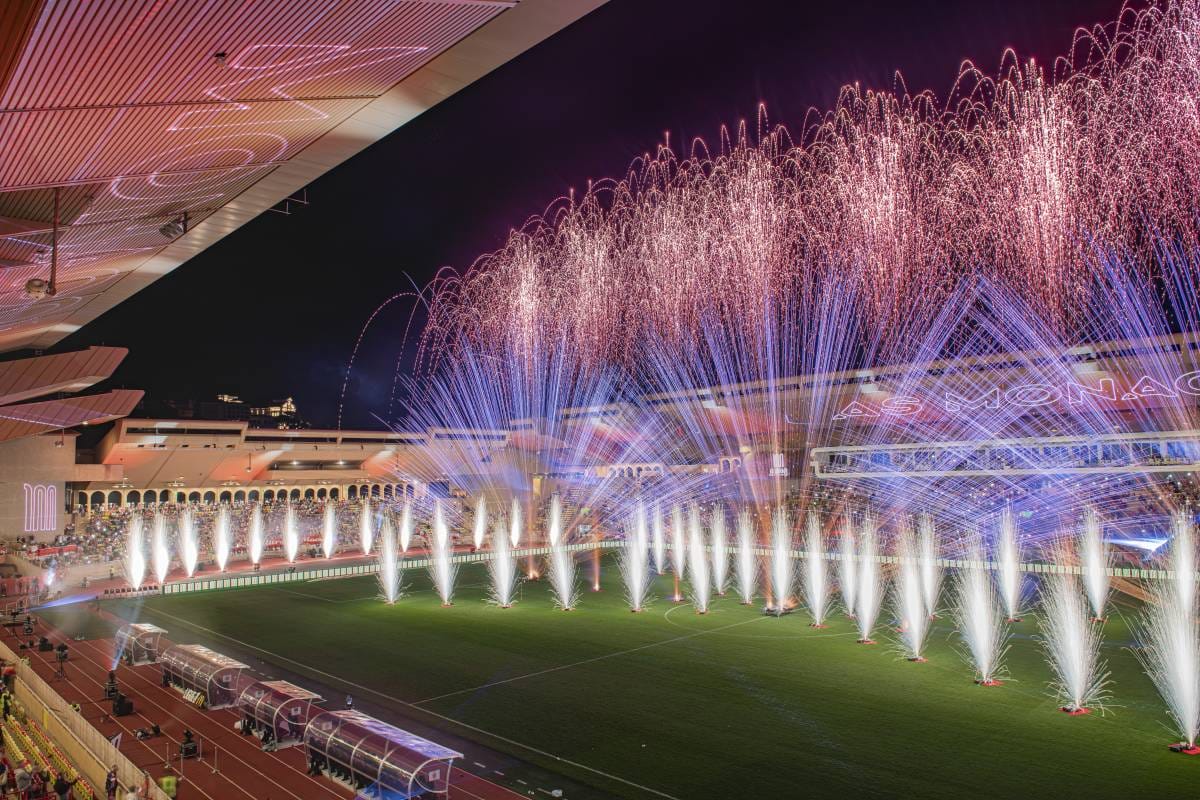
Looking Ahead in 2024: Ambitions for European Success
With the arrival of Scuro and Hütter, AS Monaco is poised to meet the challenges of an evolving European football landscape. Scuro’s strategy emphasizes mental resilience, a hallmark for any aspiring champion, while Hütter brings a tactical mindset aimed at competing at the highest levels. Together, they aim to build a squad capable of vying not just for the top spots in Ligue 1 but also for European glory.
As Monaco reflects on its past achievements, the future shines brightly for the club.

